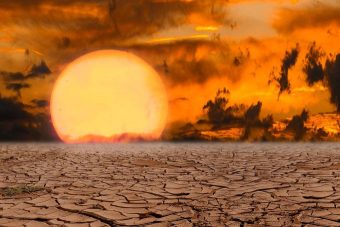
Last year was the warmest year on record for land and sea, partly because seasonal El Nino climate patterns prevailed year-round, and melting ice pushed sea levels to the highest ever, a study based on the work of more than 450 scientists worldwide confirmed on beginning of this month.
The State of the Climate report, published by the American Meteorological Society, followed a report by two U.S. government agencies which found 2015’s global average temperature was the hottest ever by the widest margin on record.
The annual study, led by the National Oceanographic and Atmospheric Administration, would likely add fuel to the ongoing debate over global warming policies such as the international agreement forged in Paris in December.
The record heat in 2015 was driven by a combination of long-term global warming and one of the strongest El Nino climate patterns in at least half a century, it said. El Nino brings unusually warm water in the Pacific Ocean after late December and can cause catastrophic weather conditions.
Last year was the first time that Earth was 1.0 degree Centigrade (1.8 degrees Fahrenheit) warmer than preindustrial times, the report said.
“This ‘annual physical’ of Earth’s climate system showed us that 2015’s climate was shaped both by long-term change and an El Niño event,” Thomas Karl, director of the NOAA’s National Centers for Environmental Information, said in a statement.
“Last year’s El Niño was a clear reminder of how short-term events can amplify the relative influence and impacts stemming from longer-term global warming trends.”
El Nino is likely to have an even greater impact on global surface temperatures in 2016, setting the stage for another record-breaking warming year, the report said.
The global sea level rose about 70 mm (2¾ inches) above the 1993 average, it added. Over the past two decades, the level has risen at an average of 3.3 mm (0.15 inch) per year, with the highest gains in the western Pacific and Indian Oceans.
Greenhouse gas concentrations were also the highest on record, exceeding 400 parts per million for the first time at the Mauna Loa observatory in Hawaii, the report said.
Global surface and sea temperatures were the highest since at least the mid-to-late 19th century, when detailed records were first kept.
The report found that Arctic land surface temperatures were the highest in 2007 and 2011 since record keeping began in the early 20th century, reducing sea ice and affecting marine animals.
Source: reuters.com



